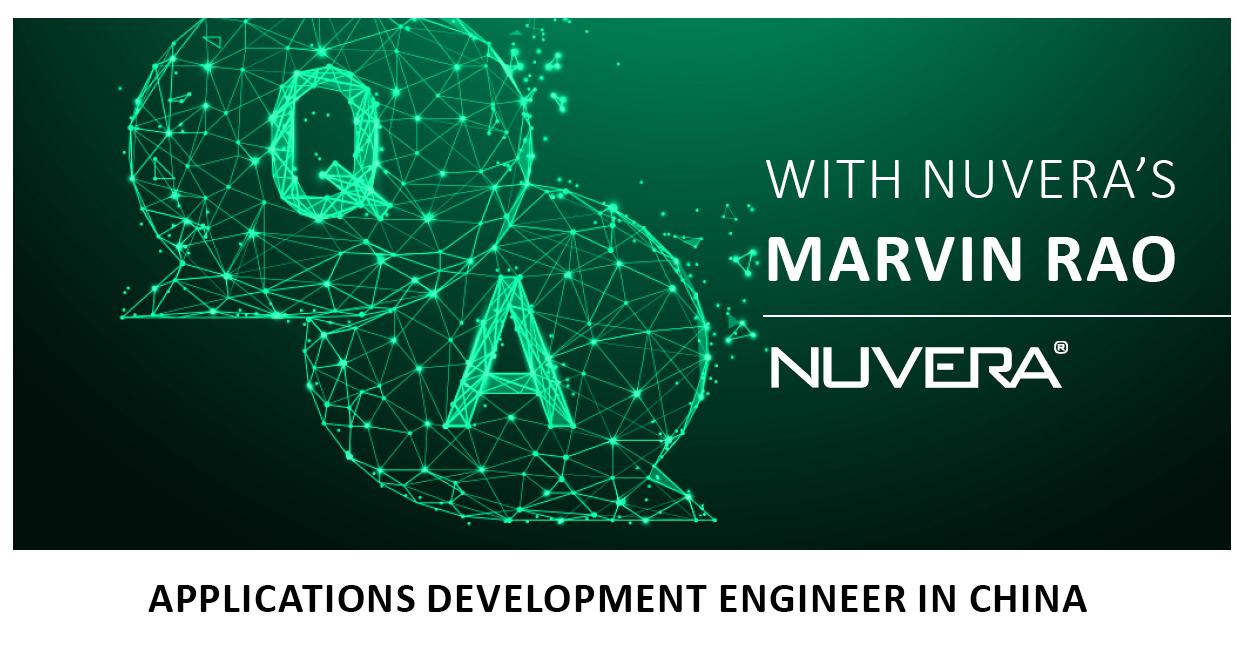Curious how customers incorporate fuel cells into their products as Nuvera fuel cell engines are being introduced into vehicle platforms around the world? Check out this Q&A with our applications development team to learn about how they enable successful integrations:
Q&A with Nuvera’s applications development engineer in China, Marvin Rao

1. Can you introduce your role at Nuvera?
With the strong support from the Nuvera applications development team based in our U.S. headquarters, I am responsible for applications activities in China, helping integrate Nuvera fuel cell engines into customers’ electric vehicles and other green power platforms in the China market. This includes understanding the customers’ unique requirements, providing professional assessment around system configuration, commissioning the fuel cell engine, and related fuel cell knowledge training.
2. Can you share briefly what made you choose Nuvera? (or what brought to Nuvera)
Firstly, I am honored to be the first regular staff member in Nuvera China, starting here in 2019. As we all know, global warming is threatening the earth. While hydrogen is growing as a meaningful zero-emission energy solution—and Nuvera has been working with fuel cell technology for more than two decades and bringing its technology to China—the fuel cell engine is also a new product in the China market. This pioneering effort is exciting, a great opportunity and professionally attractive to me. I have 20 years’ experience working in engineering, manufacturing and customer service, so I am confident that my experience will benefit Nuvera’s business in China.
3. We’ve read a lot about China’s initiatives around zero-emission mobility especially in the hydrogen fuel cell adoption in the recent years. Can you share some insights based on your active role in the industry and projects?
The China government announced its carbon-neutral roadmap, and hydrogen energy plays an important role in it. The Chinese government has approved five Fuel Cell Vehicle Application Demonstration City Clusters; in these areas, cities can apply for central financial rewards and receive investments from provincial, municipal, enterprise and social funds. More than 33,000 vehicles will be developed during the demonstration period. And more demo cities are expected to be approved. I participate in exhibitions and industrial forums, and all participants believe there is a bright future for fuel cells in China. Experts believe today’s fuel cell vehicle is similar to the electric vehicle from 10 years ago and will grow much faster as compared to battery EVs. Companies in the hydrogen energy industry are getting more funds and attention. More and more fuel cell companies have gone public or are on the way to an IPO.
4. We were impressed about the announcement about carbon-neutral 2022 Olympic Games. Can you tell me more about what you observed in China?
I am very proud that China is hosting the Winter Olympic Games; these will be the first carbon-neutral games. All venues are fully powered by green energy, even the ice-making technology is producing zero-emissions. As hydrogen energy is a clean, efficient, safe and sustainable energy, the Beijing Winter Olympic Games used hydrogen to fuel the Olympic torch as well as light the main hydrogen torch during the opening ceremony. The Beijing Winter Olympics has more than 1,000 hydrogen fuel cell vehicles and more than 30 hydrogen refueling stations. This is a great opportunity to showcase fuel cell vehicles.
5. As China continues to invest in hydrogen infrastructure and fuel cell applications, can you tell us more about focused applications and industry trends?
Hydrogen infrastructure is fundamental to hydrogen applications. Sinopec is going to build 1,000 fuel cell stations by 2025. Applications with fixed routes and short range are the reasonable early deployments. City bus, port vehicles, and mining vehicles, as well as short-distance transportation trucks, are among the recommended early applications for fuel cell engines. The market is demanding more powerful, high-reliability fuel cell vehicles.
6. Nuvera works with OEMs and system integrators to design and manufacture zero-emission vehicles. What makes Nuvera® Fuel Cell Engines and the company’s integration support services unique for mobility applications?
The compact engine design, more than two decades of experience, comprehensive test data, detailed assessments for each application, global presence – these are Nuvera’s unique strengths. And the 125 kW Nuvera engine model currently under development will further expand our market coverage.
7. What other vehicle platforms look promising for China near-term?
There are many different applications in the Chinese market for fuel cells. For example, a Chinese bike-sharing company has made a fuel cell bicycle. For heavy-duty applications, there is interest in marine vessels.
